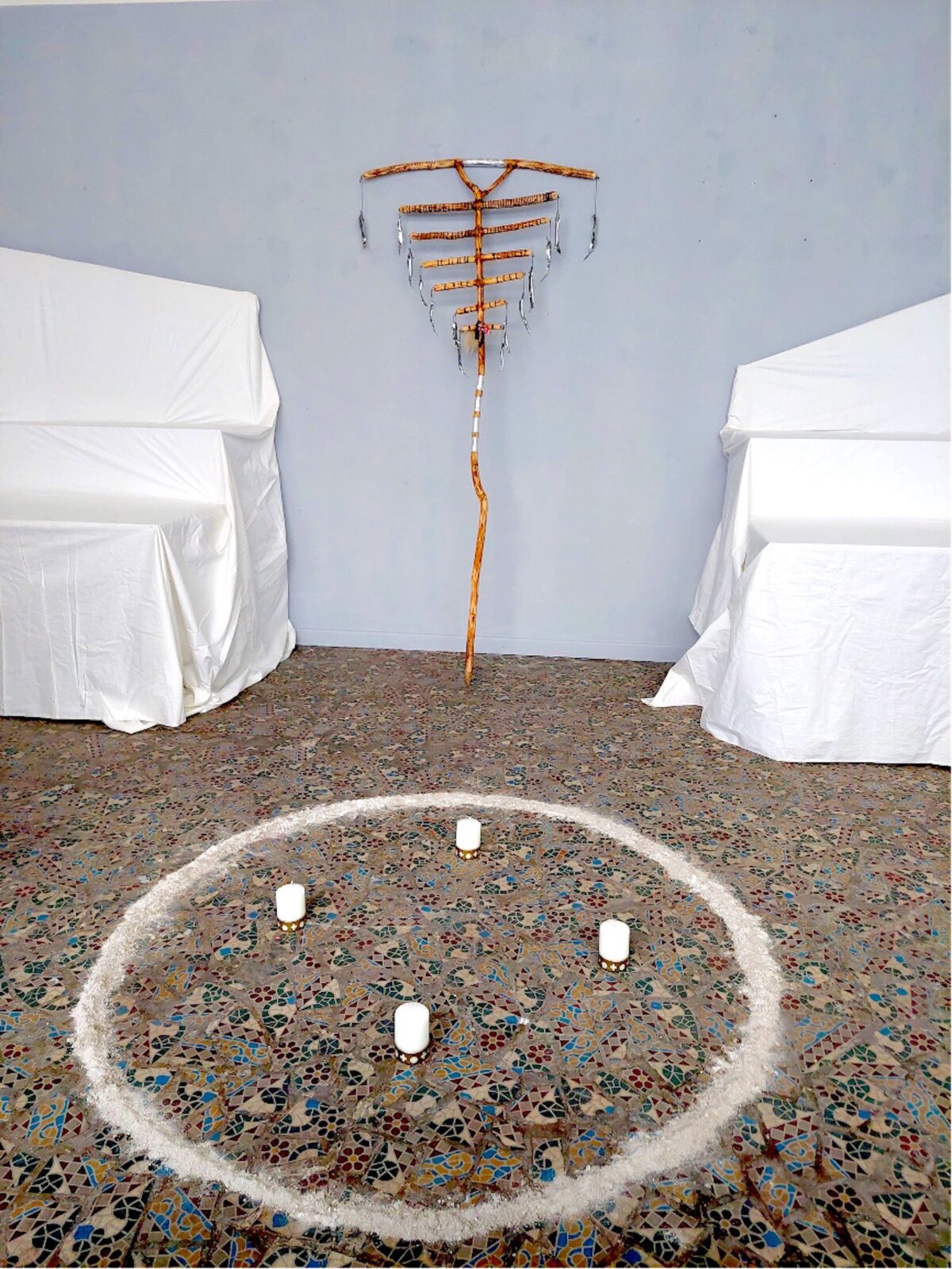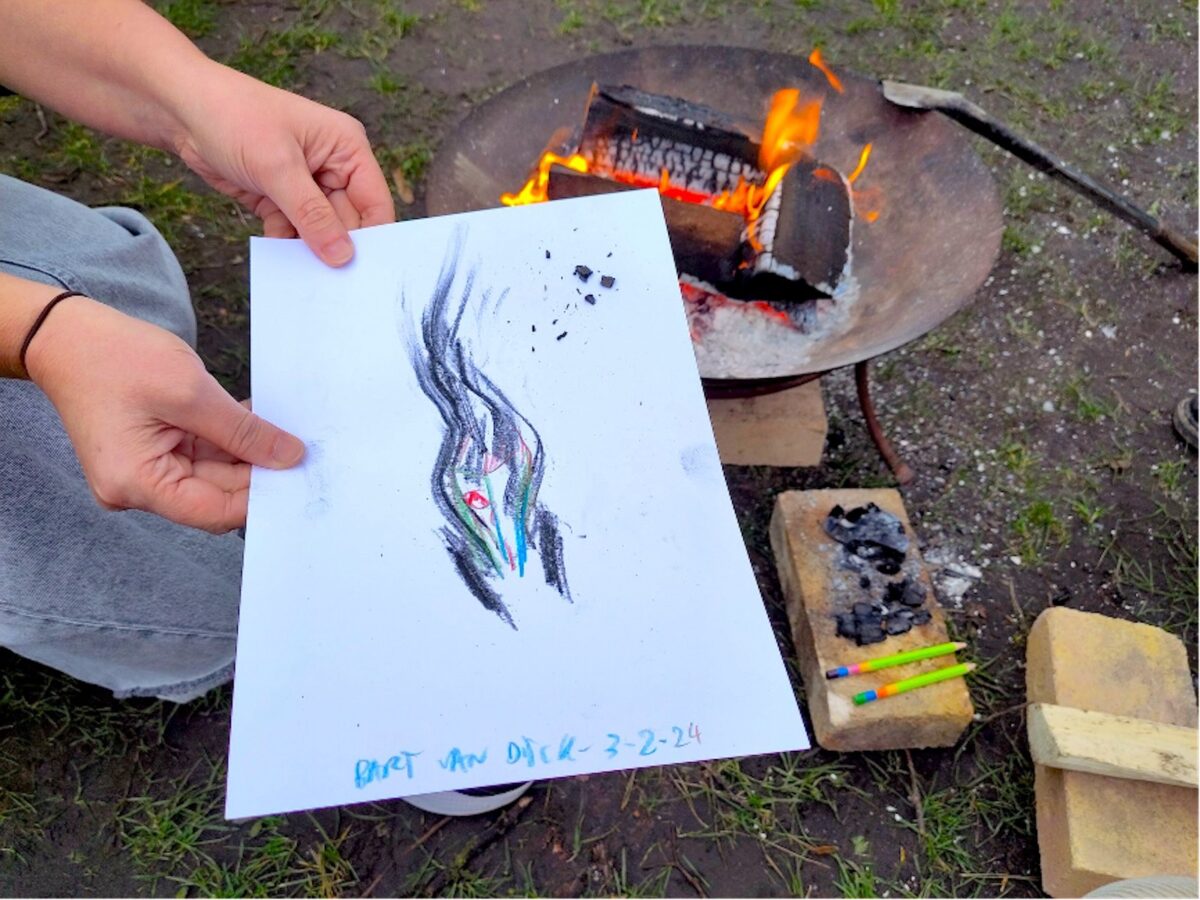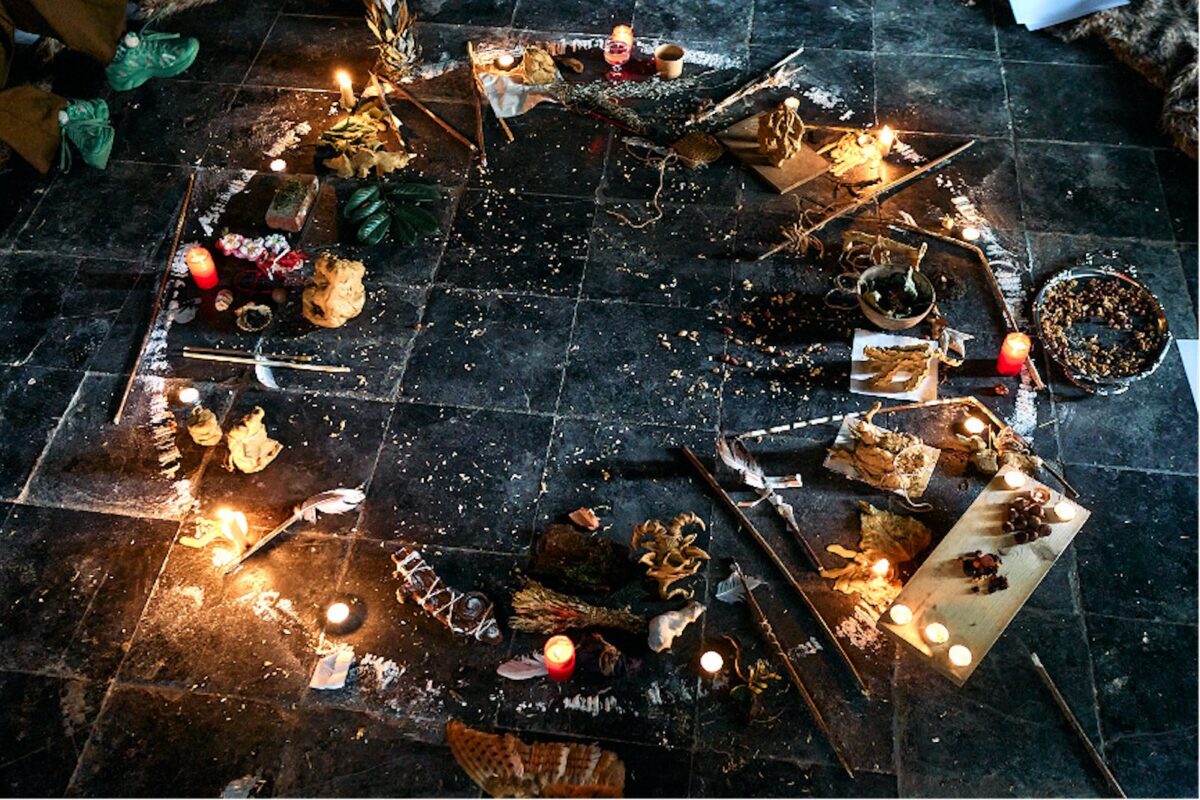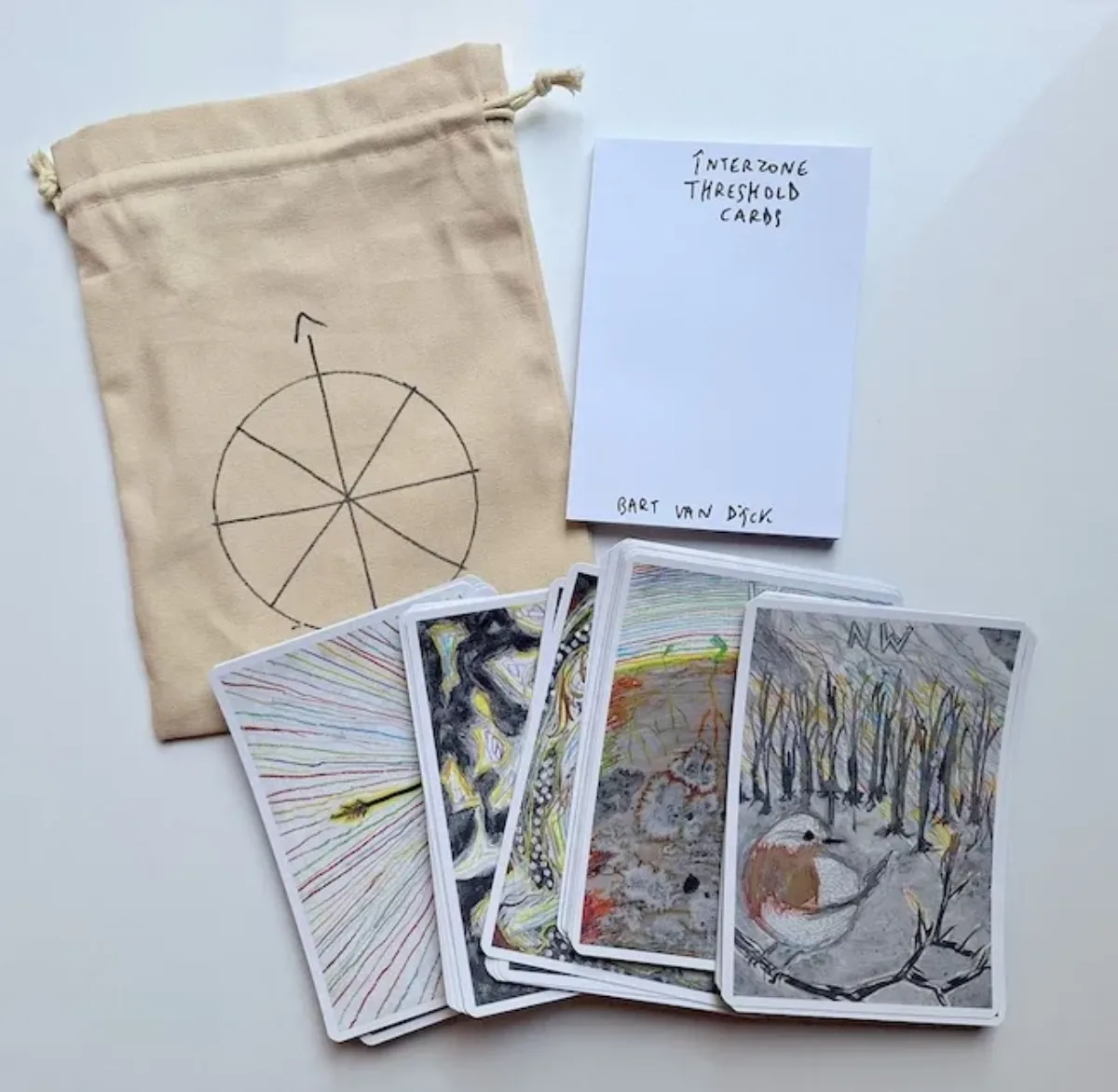Based in Berchem, Belgium
Website https://bartvandijck.be
Research project ÎNTERZONE (architecture of the ritual space)
Location Royal Academy of Fine Arts Antwerp (AP Hogeschool) and University of Antwerp (ARIA)
Can you describe your research project?
In my research, I explore how a ritual space and time can be constructed from my artistic practice. Drawing inspiration from anthropology, shamanism and animism, I established the platform Înterzone, where I developed a number of participatory projects. I involve spectators as active participants in these rituals, and place their experiences at the centre of my artistic practice.
I investigate how these Înterzone rituals can generate an empowering and transformative impact on the participants, and how creative processes can contribute to this. I view the ritual not merely as a form, but as a catalyst for positive effects—such as channeling emotions, healing, connecting, inspiring wonder, transforming and community building.
In this context, I consider the image of the snake shedding her old skin to grow as a powerful symbolic representation. These rituals, that I consider to be social sculptures, facilitate moments of transition, where somebody crosses a threshold into a new phase. Alongside the snake, the threshold is an important, recurring metaphor in my practice.
Înterzone is the territory of the fox, an in-between space where other rules apply. It’s a temporary, ephemeral space where people can get together and share experiences, where senses and intuition are sharpened, and where a veil is lifted, allowing them the opportunity to witness the magic of life.

Why have you chosen this topic?
Over the past years, I have developed a hybrid artistic practice consisting of sculptures, videos, performances, drawings, photographs and installations. Mostly, these works originated from my fascination with subcultures, folklore, and ritual gatherings. These are often the moments when a cultural group expresses its collective identity and seems to connect with something bigger or older than the group. Recently there has been a shift in my way of working, accompanied by a desire to no longer just observe groups and rituals, but to actively contribute to the formation of groups and rituals myself. This research project has both accelerated and deepened this turn.
Additionally, I have observed that as we organize our lives increasingly “comfortably” with the aid of (digital) technologies, we also alienate ourselves from nature, and consequently from ourselves and each other. Capitalist society tend to reduce us to mere producers and consumers, fostering a sense of agitation. In the ritual space, we can shed these stigmas and cultivate attention and awareness, allowing us to connect with different aspects of ourselves, each other, and the natural world. In a fragmented, digitized, automated, and polarized society—where companies, media, algorithms, and politicians hijack our attention—a strong need emerges to rewild, come together, and engage in meaningful shared experiences.

What research methods do you use?
My research methods are, alternating literature review, study of artistic and ritual practices, attending workshops and trainings, conversations with participants, peers, curators, reflective writings and reports.
Next to that, the practice itself: I developed eight Înterzone-rituals, that people can join, sometimes linked to a specific moment in the year, sometimes in collaboration with other artists, which I have continued to repeat each year:
- Ancestor Walk (end of October, beginning of November)
- Smth Ssnk Nghtwlk (in winter at the Kalmthoutse Heide, in summer in the Ardennen)
- Dying Bear Meditation (with Marius Popa, from fall to early spring),
- Fledglings/Nestvlieders (with Ignace Cami, end of winter)
- TUSKS 1:1 – Spring Celebration (with Stan D’Haene, at the beginning of spring)
- Fox & Firewalk
- What the Fire Brings
- Înterzone Smmr Camp
A ritual gains strength when it is repeated, and so it also gains something familiar. As I kept repeating the above rituals, I was able to deepen and sharpen the different scripts.
On a regular basis, I spread out calls to participate (see website and Instagram) or I organize the rituals on request.

In what way did your research affect your artistic practice?
This research project facilitated a transformation of my artistic practice, which has become more sustainable and social. Instead of constantly generating new forms and concepts, I focus on repeating, adapting and deepening the different rituals I work with, tailored to the specific situation, context and moment. The repetition generates an intensity and provides depth, stability and familiarity. I see a good chance that the Înterzone-rituals are not going to stay exactly the same, but will continue to evolve in the future, as they have continued to change over the past four years.
The experiences I have gained during this project have broadened my skills, allowing me to better understand how to guide people during processes of ritualisation and holding space.
My research has generated elements and methods that I can activate both inside and outside an art context.

What are you hoping your research will result in, both personally and publicly?
The conclusion of this period is, above all, also a new beginning. I hope to continue to perform the rituals I have developed, in a form adapted to the situation and context, and to connect with organizations, art spaces or arts festivals, so that a wider visibility can emerge. My goal is to continue to grow and learn in this also on a personal level.
I think it’s about time that ritual practices become even more integrated in the museums and art spaces and in society.
I am also looking forward to new collaborations, so that the Înterzone-rituals can be carried even more collectively in the future. I hope the fire will keep on burning in a beautiful way and bring people together.

ÎNTERZONE Threshold Cards
These cards were created during the artistic PhD project ÎNTERZONE (architecture of the ritual space) and deal with change, growth, decay and the cycle of the seasons. They are linked, in a direct or indirect way, to the different rituals Bart Van Dijck developed and performed during the past years.
The cards are a way to unlock his research and give an overview of the threshold rituals he organised, sometimes in collaboration with other artists and sometimes linked to specific moments in the year.
However, they can also be used autonomously as a way to stimulate the imagination and connect with our intuition or unconscious. You can consult the cards for inspiration. They can offer answers to specific questions, or inspire new insights. They can spark conversation or interaction. They can be particularly helpful in a ritual context, at threshold moments, or during a period of change. Sometimes they can even behave like magical helpers. They can confirm, suggest, or question.
With their backs turned and laid in a row, the cards can form a symbolic threshold that you can charge with meaning and use at moments of transition.
The cards are available here.




